With the development of science and technology, new types of food contact materials are constantly emerging in daily life, and silicone is one of them. For example, silicone spatulas for stir frying, molds for making pastry cakes, sealing rings for tableware, and baby products such as pacifiers, straws, and toothbrushes are all made of silicone. As a highly active adsorption material, food contact materials made of silicone have the characteristics of lightweight, anti drop, easy to clean, and non rusting, and are highly popular among consumers pursuing health. But many consumers are also concerned that silicone utensils that have been exposed to high temperatures for a long time, come into contact with a large amount of oily and acidic food, and come into direct contact with food, will plasticizer migration and heavy metal precipitation occur during the cooking process? What is the amount of “precipitate”? Is it toxic to the human body if eaten? Is there any guarantee for the quality and safety of silicone products?
In order to understand the quality status of silicone shovels and silicone molds sold in the Qingdao market and provide consumers with authentic and reliable product information, the Qingdao Municipal Consumer Protection Commission officially launched comparative tests of some silicone shovels and silicone mold products at the end of 2021. On the morning of March 9th at 10 o’clock, a large-scale science popularization program “Consumer Laboratory” jointly created by the Qingdao Municipal Consumer Protection Commission, Qingdao Municipal Quality Inspection Institute, and Peninsula Urban Daily launched the “3.15 Special Edition”, which entered the physical and chemical laboratory and directly attacked the experimental site to “capture” the migration of silicone kitchenware during high-temperature cooking.

The total number of samples for this comparative experiment is 20 batches, all of which were actually purchased by staff members of the Qingdao Consumer Protection Commission as ordinary consumers in various large shopping malls, supermarkets, as well as e-commerce shopping platforms such as JD and Tmall in Qingdao. Among them, 10 batches of silicone shovels come from offline shopping malls; 10 batches of silicone molds, 7 batches from offline shopping malls, and 3 batches from online shopping malls.
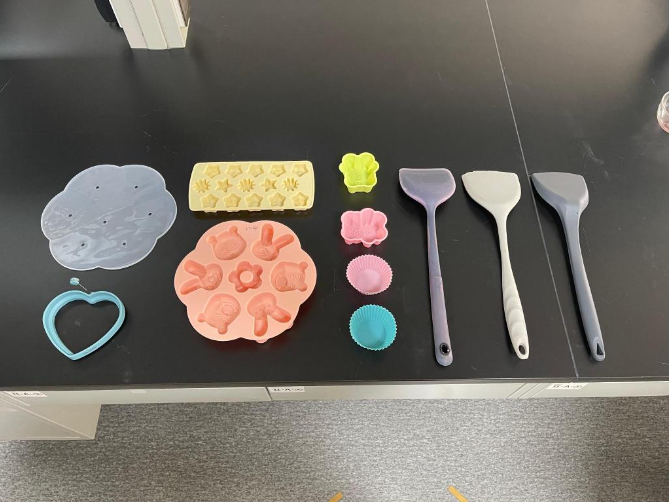
The testing experiment was conducted at the Qingdao Product Quality Inspection and Research Institute, and the testing items included potassium permanganate consumption, total migration, heavy metals (in Pb), plasticizer migration (DEHP, DAP, DINP, DBP), and transferable elements (antimony Sb, arsenic As, barium Ba, cadmium Cd, chromium Cr, lead Pb, mercury Hg, selenium Se). The standards include GB 4806.11-2016 “National Food Safety Standard for Rubber Materials and Products in Contact with Food”, GB 9685-2016 “National Food Safety Standard for the Use of Additives in Contact with Food Materials and Products”, GB 31604.30-2016 “National Food Safety Standard for the Determination and Migration of Phthalates in Contact with Food Materials and Products” GB 6675.4-2014 “Safety of Toys – Part 4: Migration of Specific Elements”, etc.
In this issue of “Consumer Lab”, we will directly examine the migration of silicone kitchenware during cooking, revealing its original form, which is a great eye-opener and breathtaking experience. In response to the harmful substances such as heavy metals and plasticizers that are of utmost concern to citizens and consumers, the experiment has specially increased relevant testing and utilized advanced instruments and equipment for targeted and precise measurement, using science to restore the truth.
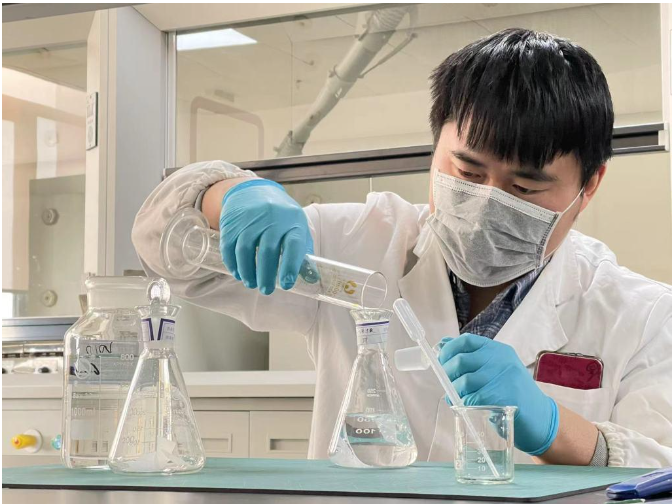
Han Bing, the head of the comparative experiment project of the Qingdao Municipal Consumer Protection Commission, and Sun Chunpeng, an engineer from the Qingdao Municipal Quality Inspection Institute, visited the live broadcast room of the “Consumer Laboratory” to release the final results of the experiment and provide authoritative consumer guidance. It should be noted that the results of this comparative test are only responsible for the samples and do not represent the quality of other models or batches of the brand. No unit is allowed to use the comparative test results for publicity without authorization; The ‘price’ of the sample is only the purchase price at that time.
In the physical and chemical laboratory of Qingdao Quality Inspection Institute, 20 batches of silicone product samples were first sent to a 220 degree oven and aged in hot air for 10 hours, simulating the high-temperature environment of silicone products during daily use. After 10 hours, take out 20 samples and cool them. Cut a certain area of silica gel from each of the 20 samples according to a certain experimental ratio for sample preparation.
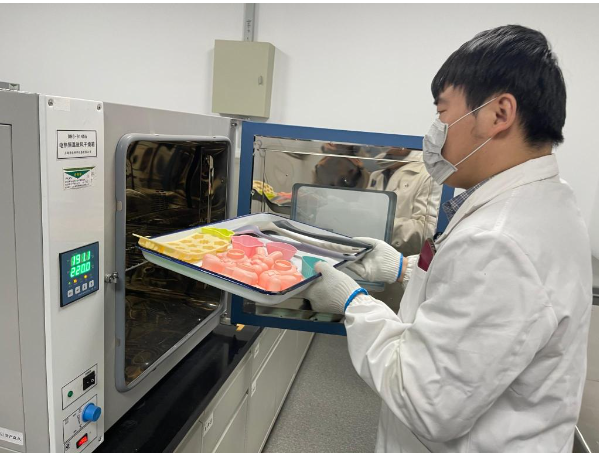
Tested sample aged in hot air at 220 ° C for 10 hours
When using silicone spatulas and molds, the most important concern for citizens is whether something will migrate out. The experimental project of ‘total migration’ can accurately capture the amount of non volatile substances in food contact materials that migrate into the food.
I saw laboratory technicians immersing the cut silicone in a food simulant of 4% acetic acid and 50% ethanol, soaking it for 4 hours at 100 ℃, and then placing the soaking solution in an evaporating dish until it evaporates to dryness. At this point, some of the bottom of the evaporating dish seem to have just been carefully cleaned, spotless; Some can be seen with the naked eye with a small amount of white residue attached, which looks a bit like “scale”.
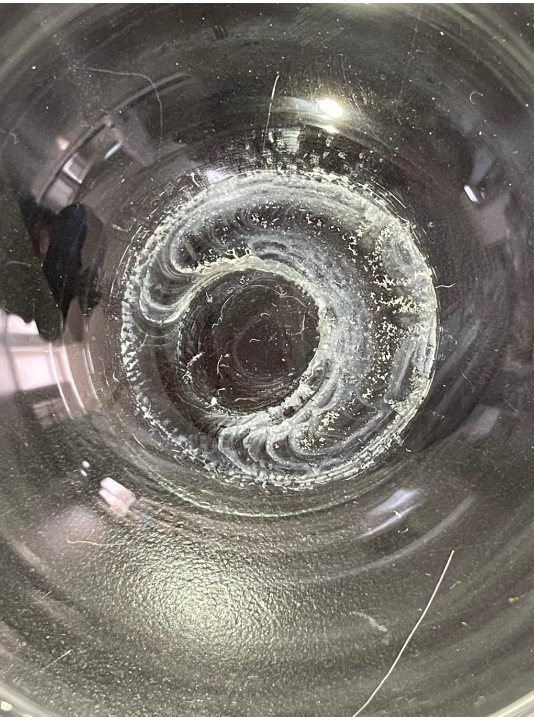
The residue at the bottom of the evaporating dish is the outflow of silicone products
Using acetic acid and ethanol to simulate the oily and acidic environment in which silicone utensils are cooked, the residue that everyone sees is the non volatile substances that migrate out. “Sun Chunpeng, an engineer from Qingdao Quality Inspection Institute, introduced that non volatile substances in food contact materials migrate into food, which can easily produce odors, affecting the taste of food and even affecting people’s physical health.
However, the total migration data obtained from the 20 batches of rubber spatula and silicone mold samples in this experiment is still quite reassuring – the total migration of silicone spatula is mostly concentrated in the range of 1.5 mg/square decimeter to 3.0 mg/square decimeter, while the total migration of silicone mold is mostly concentrated in the range of 1.0 mg/square decimeter to 2.0 mg/square decimeter, all of which meet the requirements of national standard GB 4806.11-2016 (≤ 10 mg/square decimeter). In addition, the results of the total migration of silicone spatula and silicone mold did not show a trend change with the sample price.
The “consumption of potassium permanganate” test is another experiment that can enable the migration of silicone products to “show their original form”. The experimental personnel immersed the cut silica gel in water at 60 ℃ for 2 hours. The soaking solution was titrated with potassium permanganate solution, and the consumption value of potassium permanganate was finally determined through color changes, dosage calculations, etc.
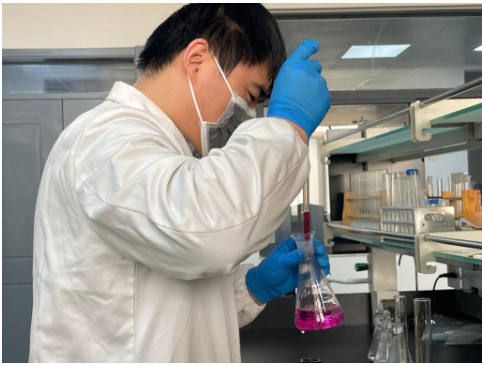
The residue at the bottom of the evaporating dish is the outflow of silicone products
Using acetic acid and ethanol to simulate the oily and acidic environment in which silicone utensils are cooked, the residue that everyone sees is the non volatile substances that migrate out. “Sun Chunpeng, an engineer from Qingdao Quality Inspection Institute, introduced that non volatile substances in food contact materials migrate into food, which can easily produce odors, affecting the taste of food and even affecting people’s physical health.
However, the total migration data obtained from the 20 batches of rubber spatula and silicone mold samples in this experiment is still quite reassuring – the total migration of silicone spatula is mostly concentrated in the range of 1.5 mg/square decimeter to 3.0 mg/square decimeter, while the total migration of silicone mold is mostly concentrated in the range of 1.0 mg/square decimeter to 2.0 mg/square decimeter, all of which meet the requirements of national standard GB 4806.11-2016 (≤ 10 mg/square decimeter). In addition, the results of the total migration of silicone spatula and silicone mold did not show a trend change with the sample price.
The “consumption of potassium permanganate” test is another experiment that can enable the migration of silicone products to “show their original form”. The experimental personnel immersed the cut silica gel in water at 60 ℃ for 2 hours. The soaking solution was titrated with potassium permanganate solution, and the consumption value of potassium permanganate was finally determined through color changes, dosage calculations, etc.
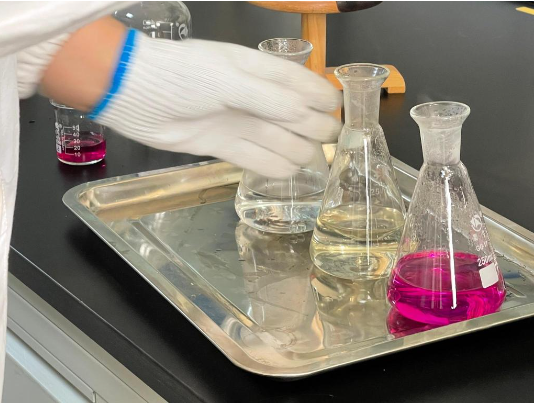
The experimental results show that the consumption of potassium permanganate in silicone shovels is mostly concentrated in the range of 2.0 mg/kg to 3.0 mg/kg, while the consumption of potassium permanganate in silicone molds is mostly concentrated in the range of 1.5 mg/kg to 2.5 mg/kg, which meets the requirements of the national standard GB 4806.11-2016 (≤ 10 mg/kg). The resulting values of potassium permanganate consumption for silicone shovels and silicone molds did not show a trend change with sample prices.
>>>Instrument analysis: Heavy metals have been detected, and the quantity values comply with national standards
Will silicone kitchenware release toxic substances such as heavy metals and plasticizers during cooking? This is another major concern for citizens. The detection experiment of heavy metals and plasticizers is divided into two major steps: manual sample preparation and analysis with detection instruments. It is worth mentioning that as heavy metals are a concern for consumers, this experiment specifically increased the detection of heavy metals.
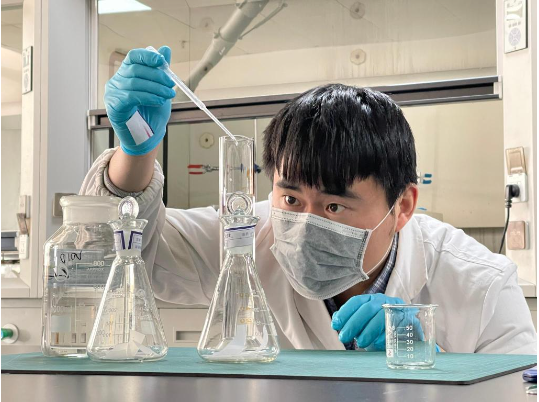
According to the requirements of the national mandatory standard GB 4806.11-2016 “National Food Safety Standard Rubber Materials and Products in Contact with Food”, after testing and analysis, all the results of the heavy metal (calculated as lead) experimental items of 20 batches of silicone shovels and silicone molds meet the requirements.
Post time: May-18-2023




